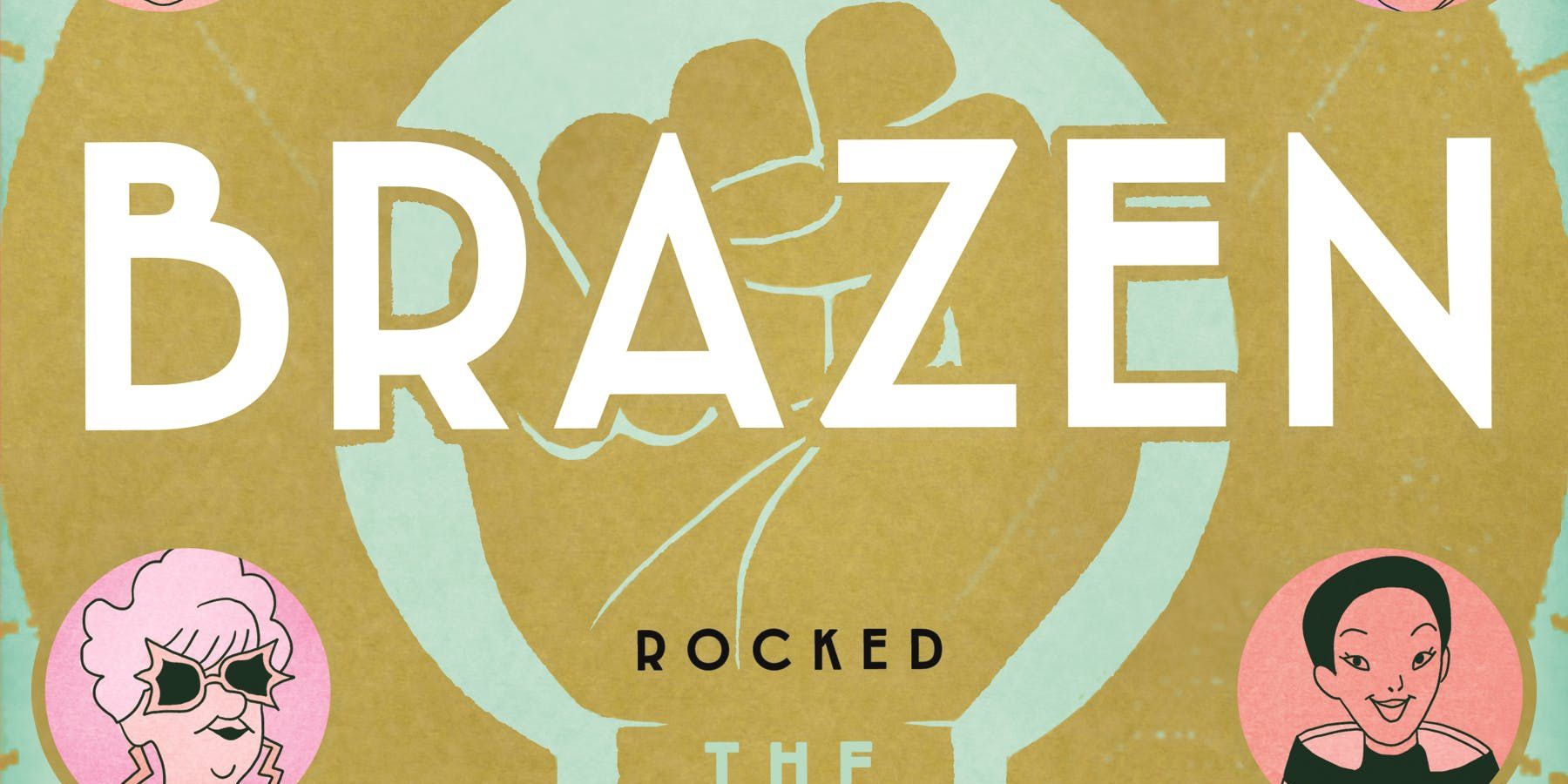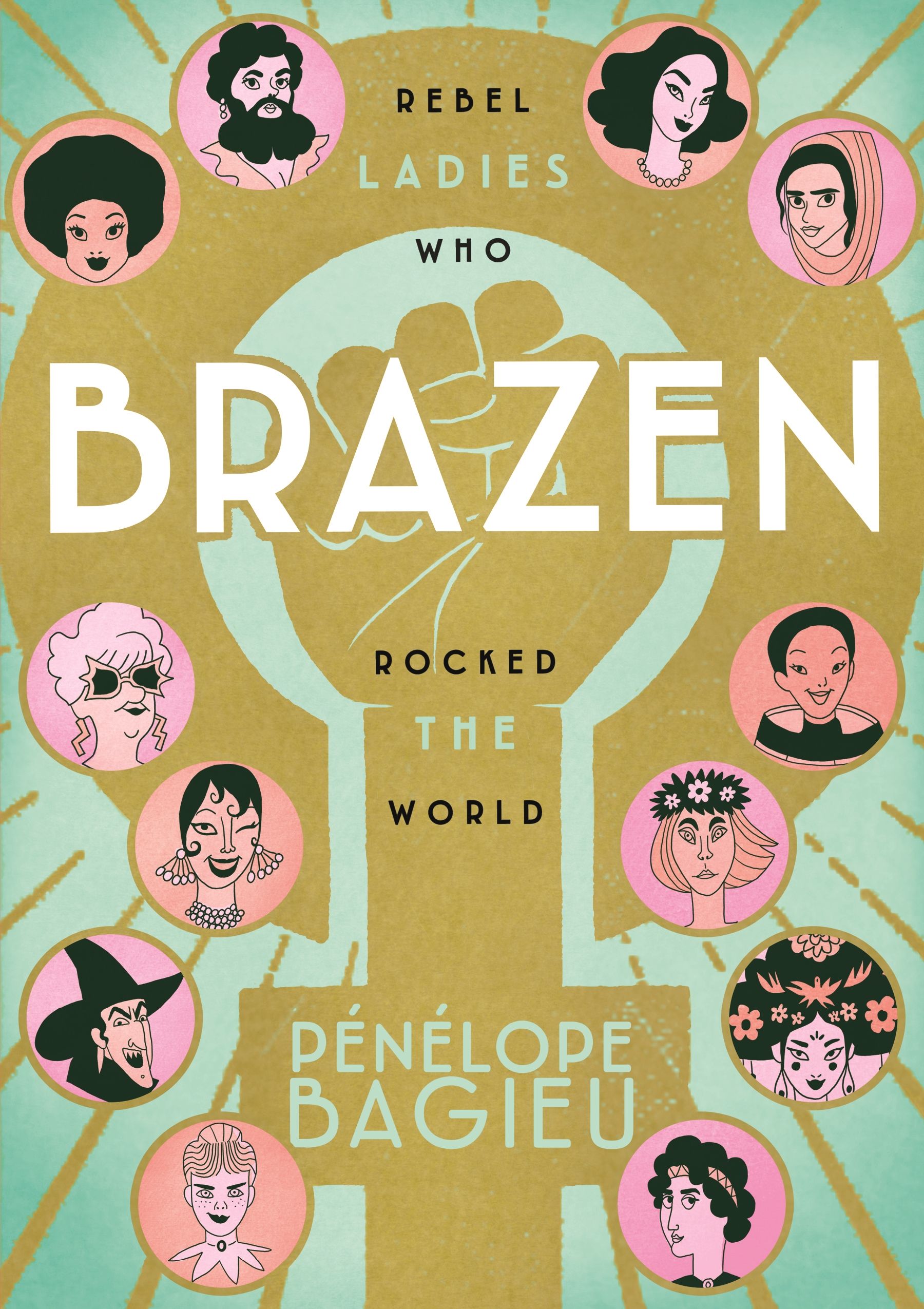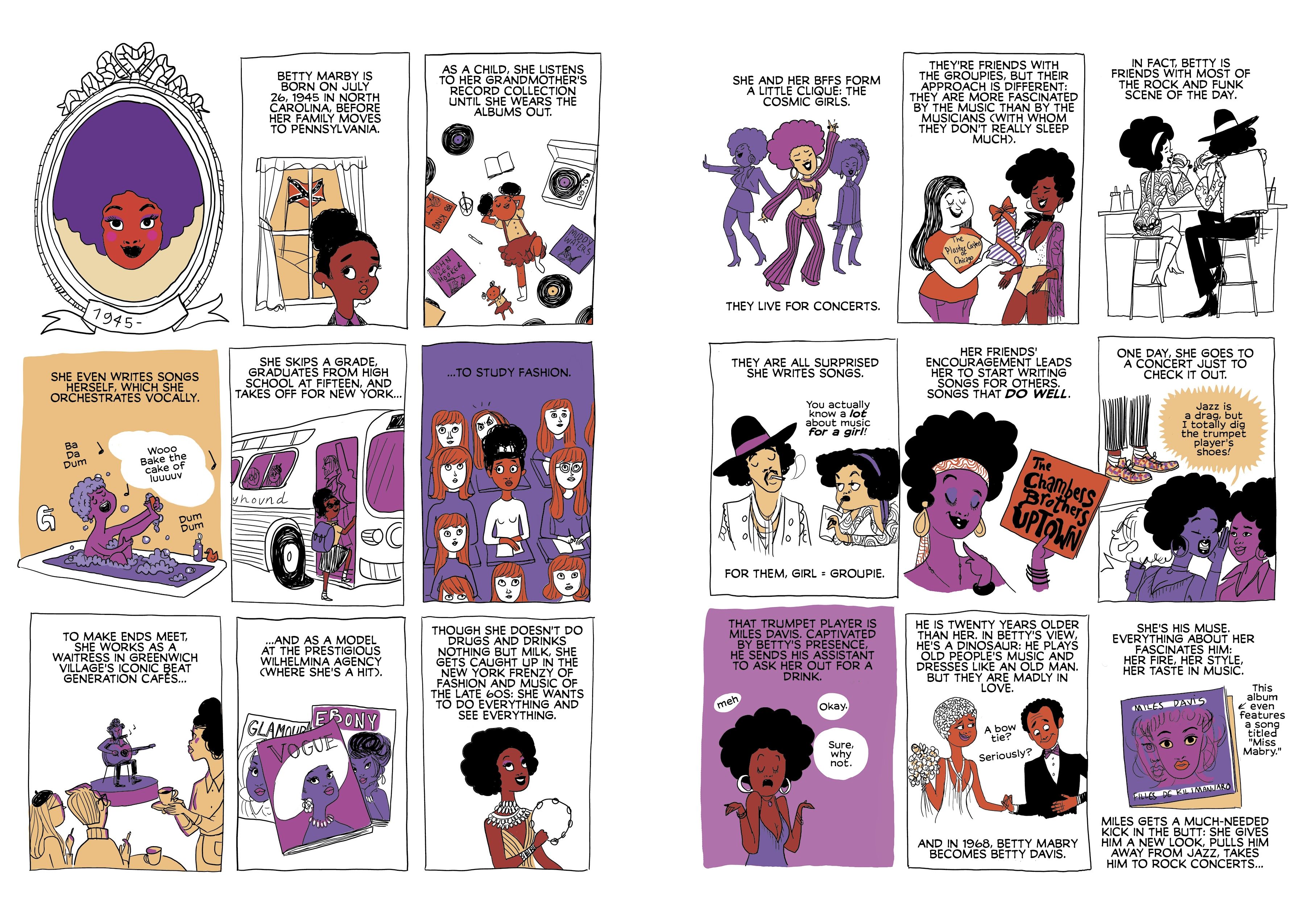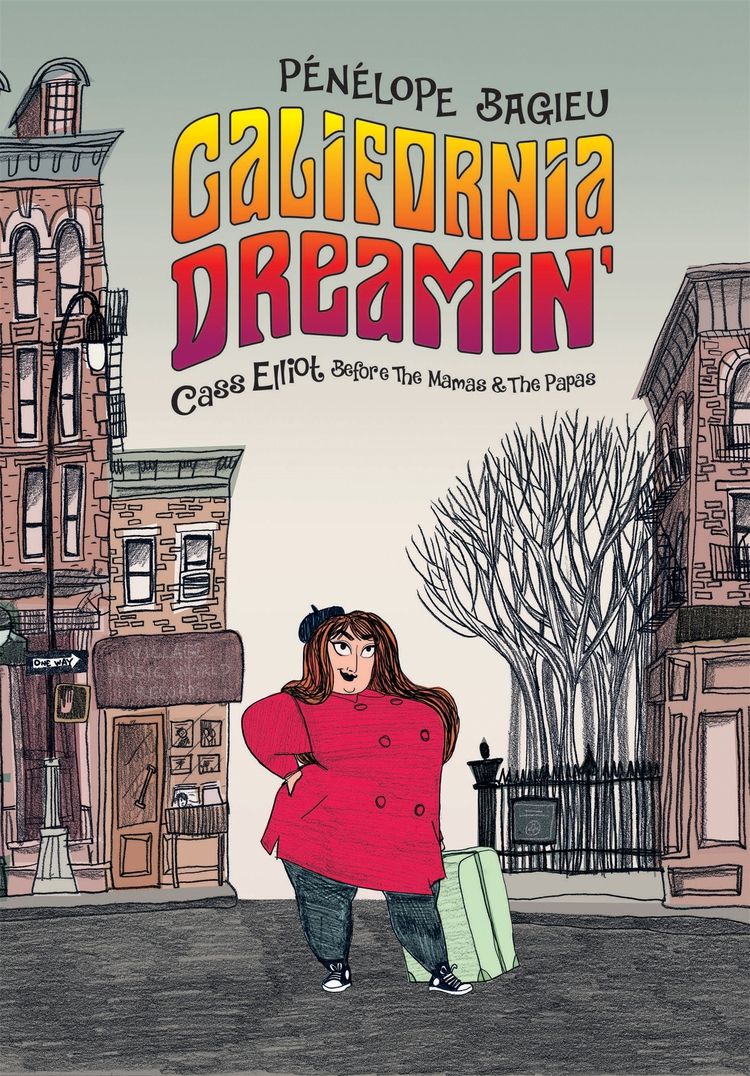In 2016, French cartoonist Pénélope Bagieu published Les Culottées, a two-volume series that offered short biographical sketches of impactful women from around the world and throughout history. One year later, the world exploded with the #MeToo movement, as women everywhere exposed the sexual abuse and systemic mistreatment that they all experience, in ways large and small. It's a different world in 2018, as Bagieu’s book -- stories from both Les Culottées volumes compressed to a single English edition, titled Brazen: Rebel Women Who Rocked the World -- makes its English-language debut from First Second Books.
Bagieu’s previous books, including Exquisite Corpse and California Dreamin’: Cass Elliot Before The Mamas & The Papas, established her voice for complex characters, but Brazen also breaks new ground by digging directly into the complex societal pressures and biases that women confront throughout the world, all throughout history. From colonial Africa and 7th century China to suburban Long Island, crossing political and religious boundaries, Brazen offers up such a wealth of women and experiences that readers can’t help but identify with their struggles, dreams and accomplishments.
RELATED: Pénélope Bagieu is California Dreamin’ about Mama Cass
Bagieu talked to CBR about the how #MeToo underscores the sorority of the women in Brazen, the difficulty of whittling down the number of profiles in the book, her objectivity toward her subjects,and her desire to take a break from reading biographies.
CBR: Pénélope, how did Brazen: Rebel Ladies Who Rocked the World come about? After spending an entire book exploring the life of Mama Cass, you decided you weren’t covering the lives of amazing women fast enough?
Pénélope Bagieu: Actually, that’s exactly what it was. I had, for years, this list of women I wanted to talk about -- one of them was Cass Elliot. When I started thinking of the book to do after California Dreamin’, there was another woman I wanted to write about. I figured that if I went that way, I would do nothing but biographies all my life, so I decided that I could make 30 of them as short stories. If people want to know more about these women, they can look for more information. Most of these women are, I believe, unknown or very little known, so this was my way to introduce them.
As you say, many of them are not well known. How did you go about selecting these women? Even discovering them in the first place is kind of an accomplishment.
Actually, it’s not. They’re everywhere. You just don’t notice them because they’re not labeled as the hero of the story. Most of them are background characters in others’ biographies or in documentaries about someone else. Once you train your eye to see them, they’re suddenly everywhere. Initially, I had a hard time selecting only 30 of them, because I could have easily done a hundred.
Some of them I had known a really long time. At first I thought of making a book about Katia Krafft, the volcanologist, or Peggy Guggenheim. Then I started thinking about all these other woman I had heard about, and their amazing stories. Once I started opening that door, it seemed like a million of them just fell onto me. It wasn’t hard to find them. It was much harder to find books about them, because some of them were so little known. That was the hard part.
Narrowing the list down seems impossible. You wrote about Agnodice, who brought women’s healthcare to ancient Greece. Thousands of years later, access to quality women’s healthcare is still a problem all over the world.
As a disclaimer, she is the only woman about whom there is doubt about whether she existed or not.
Really?
Yes. These stories were prepublished in a French newspaper Le Monde every week, and I carefully read the comments there because sometimes they were very useful for making corrections before printing. I had a few historians say that there is a little gray zone around Agnodice’s existence. Or maybe her era wasn’t exactly right. I came to view it as a fable if it’s not totally true. I think it’s very enlightening that she knew there was something very unfair about women’s health, exactly like there is today. The risks she took for other women were pure generosity.
All of these women are role models to me for this reason. She said, "This is what I want to do with my life, to help other women even if it’s dangerous or illegal." You’re right: centuries after there are still some places where you have to go illegally for women’s health and men are still passing laws to prevent women from access to healthcare. Even if we have the law against us, like Agnodice, you have to do it anyway.
While many of the women are relatively unknown, a few are actually very famous -- particularly Josephine Baker and Heddy Lamarr. What’s most compelling about your portrait of them is how you spotlight their accomplishments outside their fame -- Baker as a spy in occupied France during World War II, and Lamarr’s many patents for her inventions. Did you have specific ideas about what kinds of accomplishments you wanted to spotlight in Brazen?
The test that they had to pass to get into the book was very simple: I had to love telling their stories over and over again. That’s what I do with any book -- can I still tell that story a hundred times and not get tired of myself? It’s true that, especially for Josephine Baker in France, where she’s still so famous, I wondered if there was too much material. One of the things I wanted to do was discover new places, but then I thought that it was OK as long as I was focusing on what people don’t know about her. Both Lamarr and Baker were really known for a part of their life that they didn’t choose -- the beauty of one and being the exotic token for the other.
They are very little known for what really mattered to them. Josephine died in poverty and nobody really cared about what she had done for France. Hedy Lamarr’s obituary bragged of her beauty and that’s it. That’s very unfair, and maybe this way I can show people what really mattered to them. They were both very brave and bright women, so even though they are the two famous ones, they still have their place in the book.
The women you cover come from all over the globe and throughout history. That’s a tremendous tapestry of human history to touch on. Did you know right away that you wanted this book to go to so many times and places to spotlight these women?
It didn’t make sense to make this book and not talk about certain women. Usually when you have a list of accomplished people, there are only one or two women, and they are always white and either American or European. If this book is about women, let’s make it about all women and not forget, again, about women of color.
I also wanted a huge diversity of actions: one is a Nobel Prize winner and one saved the lighthouse. No matter what they did, it took so much courage to do it. No matter what adversity they faced, all of them found a way with the hand they were dealt. None of them were super educated or super rich. I wanted anyone who reads the book to find one that they identify with and say that, yes, those are the challenges that we face or the kind of background that I have. You don’t have to end up with a Nobel Prize. One of them just wanted to be buried with her husband. So it was not just a diversity of places or times, it was mostly the diversity of challenges.
Page 2: [valnet-url-page page=2 paginated=0 text='Brazen in the era of the #MeToo movement, finalizing the list of 30 women who appear in the book']
These women often endure incredible hardship, including physical abuse and/or imprisonment, but only Las Mariposas meet a violent end. Was that a specific choice, to show women who not only persisted but survived?
It’s funny you see it that way, because not all of them triumph.
They are often not appreciated or recognized for their accomplishments, but they do accomplish something. Baker helps with the war effort. The Montauk Lighthouse is saved. Las Mariposes have an impact on the political climate. Van Gorkum is buried next to her husband.
That’s true. There was actually a story removed from the American version of Brazen -- it’s actually only 29 portraits now; there were 30 originally -- and the one that was removed has a very violent ending. Which is why it was removed.
But yeah, I always tried to show the physical abuse and all that they have been through to show the depth of their strength, how low they are before they take action. They all go through very hard phases in their story before reacting.
Do you think it’s more important than ever in the #MeToo era to see these examples of women who overcame their abuse and their systemic oppression to change their world?
Oh, yes, absolutely. One of the most important elements of the #MeToo movement is sorority. It started with one, but then it spread and women were comforted by the fact that other women were speaking. This is also something I try to show in my stories -- how none of them did anything on their own. All of them had models of other women -- sometimes their moms, sometimes their sisters, sometimes someone who told them, “You go and don’t be afraid.” That’s another part of the #MeToo movement that really moved me -- well, it’s not the perfect moment to say that with the horrible moment in France of women who are against #MeToo. That really drives me crazy. It makes me mad!
Most smart women supported the #MeToo movement, and each voice adds a little rock to that big mountain that was raised this year. Everyone said this year the speech of women liberated itself, but it wasn’t liberated. It has always been there, but people were not listening before. And it’s important to know that 2000 years ago, they weren’t listened to either, but they spoke anyway. And today they speak louder so people have no choice but to hear them. That’s great progress.
Many of these stories first appeared in English on The Lily, the first U.S. newspaper founded and run by women. How did that partnership come about?
They are running 15 of them, up until the publishing date on March 6.
To be very honest, I had nothing to do with this. It was a deal that First Second took care of. In France, it was the global mainstream news site Le Monde [that serialized the book], so you can’t find a more global news site without any political slant. It’s not an activist website or a feminist website.
I think maybe because Americans are more familiar with feminism than in France, it’s OK for us to go all the way here. Even the idea of having something like The Lily in France, we’re still years away from that. So I said we should make the most of that when they suggested that we should get in touch with The Lily. I thought that was perfect media.
Was there a particular woman you desperately wanted to include but you just couldn’t fit her in? Maybe the theme overlapped or something like that.
Yeah, there were many. I set the number at 30, so as the list was getting shorter and shorter, I thought, “OK, I’m sorry for you, but you didn’t make it.” It’s also why there is a list of Silver Medals -- all of these women that could’ve been in there -- at the end of the book. Some of them, it was just because they were too famous. I thought I wasn’t adding anything; they already have many books about them (but still too few).
For each woman, I really wanted people to think, “Wow! How come I never heard about her before?”
For instance, and also because she died very soon after I published Brazen in France, Simone Veil, the French politician and activist. She’s the mother of a certain French feminism. She made abortion legal in France, and I had just read her autobiography when I was writing this. It so inspired me that I kept parts of her autobiography as pictures on my phone so that I can reread them. It’s so, so smart and gave me so much confidence. In France she’s so famous that her presence would cast a very deep shadow over the other women in the book. “Oh, it’s a book about Simone Veil, and other feminists.” That’s not the point.
There were also stories that intimidated me, because I love the women so much and I felt I could never be objective with them. I could never give facts; it’ll be a love letter! In the end, I kept some of them and you can tell that I’m not objective at all!
But I still have a list of women that maybe I will someday make something out of. In France right now they are producing the animated series of Brazen for TV, for kids. But already producers and the network are shifting, because I only made 30 stories and you can’t make a series with only 30 episodes. They’re already asking me if I might consider writing more, and I said, “Of course not. This is done! But if you need it, here is the list of 30 other women to spotlight.”
RELATED: Shinn & Ostertag Find Hope in Tyranny with Sci-Fi Tale Shattered Warrior
Now I guess I don’t need to ask you about Brazen 2.
It was a great year, working on this. It sounds cheesy, but doing this for one year really made me grow up. It was a very tense year; I had to write a story every week. I did nothing but read books and take notes. It was like I was a student again, except I chose exactly what I studied. So I was reading books for two days, writing for one day, then drawing for two days again. One morning each week, it had to be out, so that was a crazy mist.
Also, can you imagine reading nothing but books about powerful women all year? I really feel like I could accomplish anything, even though sometimes it was very hard because some of their stories are very sad. But it was great, and when I finished, I felt so… I don’t know -- accomplished. This is it, I’ve done it! I’ve paid this tribute and now it’s out in the world, and I never want to read an autobiography again in my life! I want to read fiction with knights in armor!
Since it came out in France two years ago, I’ve done nothing but promote Brazen in all the countries where it’s been published, and sometimes to a very young audience. I went to schools in China with the book! I’ve been to underprivileged schools and I’ve met so many very young women. Now I’m having the second part of the work, which is processing all that people are giving back from the book -- all the remarks and questions.
Usually I write fiction, so people read it and then they like it or don’t like it. That’s the end of the thing. With this book, I’m having conversations and debates. Even me, I’m still thinking about and changing my mind about some of the stories I wrote. It’s still an evolving thing, and that’s new for me. It’s great.
Brazen: Rebel Women Who Rocked the World is available on Tuesday, March 6.





